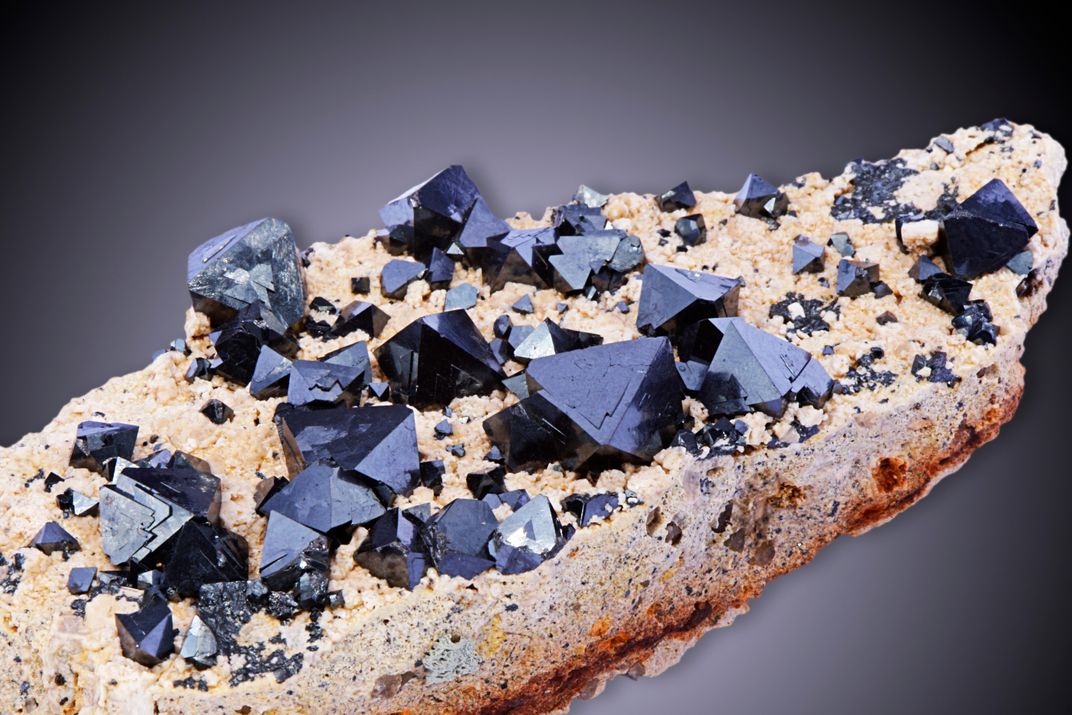Earth’s Magnetic Field Is at Least Four Billion Years Old
Tiny grains of Australian zircon hold evidence that our magnetic shielding was active very soon after the planet formed
/https://tf-cmsv2-smithsonianmag-media.s3.amazonaws.com/filer/73/6a/736a564c-8bb5-4d43-87b8-4f1962ae22c2/14762298033_1031658d7f_k.jpg)
Roughly four billion years ago, young Earth was nearly done making the transition from a hellish molten mass to a ball of rock with a solid surface. Now, grains of zircon preserved since that time show that our fledgling planet was already protected by magnetic shielding. The discovery indicates that Earth's magnetic field is almost a billion years older than previously suspected, which not only provides insight into the past evolution of the planet but may also help to illuminate its future.
The prevailing theory is that Earth's magnetic field is generated by molten iron circulating in the planet’s outer core. The field changes over time; the north and south poles wander, and the whole field can occasionally flip, with north becoming south and vice versa. Earth’s magnetic field is currently weakening, which scientists think may be a sign that a flip could happen sometime in the next couple of thousand years. The last time such an event occurred was 800,000 years ago, and scientists are still working to understand the process, which can take as long as 15,000 years. The latest evidence, published earlier this week in Nature Communications, indicates that the flip may begin beneath southern Africa, but plenty of mysteries remain.
No matter where the poles are, the magnetic field is crucial because it protects the planet from the solar wind—a constant stream of charged particles coming off the sun. Without that planetary shielding, the solar wind would erode the atmosphere, and life on Earth would look very different, if it even existed. Understanding the history and workings of our magnetic field can therefore provide clues to the chances for life on other worlds.
Rocks from South Africa had previously indicated that our magnetic field is at least 3.2 billion years old, but the field’s true age is not yet known. Determining when the field turned on is a difficult task—only rocks that have remained pristine since they formed hold a record of the ancient magnetic field, and that's a tough find on a planet that constantly recycles itself through plate tectonics.
Luckily, John Tarduno of the University of Rochester and colleagues found such rocks in the Jack Hills of Western Australia. The tiny samples of zircon contained magnetite—magnetic iron oxide—that recorded the magnetic field that existed when the rocks formed. The grains range in age from 3.3 to 4.2 billion years old, during which time the planet’s magnetic field was somewhere between 1.0 and 0.12 times the strength that it is today, the team reports this week in Science.

According to the team, the strength of the field supports the case for a core dynamo even at this nascent stage of the planet's history. That in turn backs up previous hints that plate tectonics were already in motion back then, because something needed to be moving to release the heat building up in the planet's interior.
“There has been no consensus among scientists on when plate tectonics began,” Tarduno notes in a statement. “Our measurements, however, support some previous geochemical measurements on ancient zircons that suggest an age of 4.4 billion years.”
Earth isn’t the only rocky planet in the solar system to have a magnetic field. The MESSENGER spacecraft recently found evidence that Mercury's weak magnetic field dates back at least 3.9 billion years. That both Earth and Mercury have such ancient fields implies that the planets should have had a hotter start than previously thought, says Julien Aubert of the Institut de Physique du Globe de Paris in a commentary accompanying today’s finding, also in Science.
“That start cannot be impossibly hot, though, as the crust should have been solid and cold enough by the time the remnant magnetizations were acquired,” he wrote, referring to both the recent Australian find and the MESSENGER discovery. Mars and the moon also have remnant magnetizations of similar ages, but those bodies have long since lost their global magnetic fields. For Mars, chances are that the loss of its magnetic field allowed the solar wind to strip its atmosphere, thinning it and changing its chemical makeup. Spacecraft currently orbiting the red planet are investigating whether this change is tied to the end of a warm, wet period on Mars that some scientists think could have supported primitive life millions of years ago.
Meanwhile, the new findings here on Earth could help in the development of a unified theory for planetary magnetic fields, which would explain their birth and death and perhaps point to the future of magnetic shielding—and maybe life—on our home world.
/https://tf-cmsv2-smithsonianmag-media.s3.amazonaws.com/accounts/headshot/Sarah-Zielinski-240.jpg)
/https://tf-cmsv2-smithsonianmag-media.s3.amazonaws.com/accounts/headshot/Sarah-Zielinski-240.jpg)